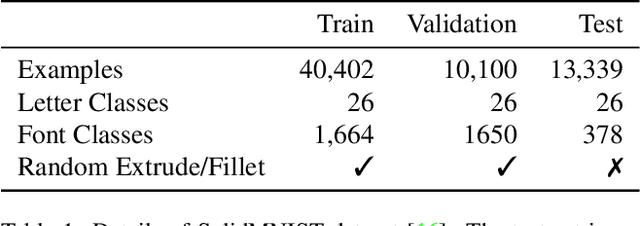UVStyle-Net: Unsupervised Few-shot Learning of 3D Style Similarity Measure for B-Reps
Paper and Code
Apr 28, 2021



Boundary Representations (B-Reps) are the industry standard in 3D Computer Aided Design/Manufacturing (CAD/CAM) and industrial design due to their fidelity in representing stylistic details. However, they have been ignored in the 3D style research. Existing 3D style metrics typically operate on meshes or pointclouds, and fail to account for end-user subjectivity by adopting fixed definitions of style, either through crowd-sourcing for style labels or hand-crafted features. We propose UVStyle-Net, a style similarity measure for B-Reps that leverages the style signals in the second order statistics of the activations in a pre-trained (unsupervised) 3D encoder, and learns their relative importance to a subjective end-user through few-shot learning. Our approach differs from all existing data-driven 3D style methods since it may be used in completely unsupervised settings, which is desirable given the lack of publicly available labelled B-Rep datasets. More importantly, the few-shot learning accounts for the inherent subjectivity associated with style. We show quantitatively that our proposed method with B-Reps is able to capture stronger style signals than alternative methods on meshes and pointclouds despite its significantly greater computational efficiency. We also show it is able to generate meaningful style gradients with respect to the input shape, and that few-shot learning with as few as two positive examples selected by an end-user is sufficient to significantly improve the style measure. Finally, we demonstrate its efficacy on a large unlabeled public dataset of CAD models. Source code and data will be released in the future.
 Add to Chrome
Add to Chrome Add to Firefox
Add to Firefox Add to Edge
Add to Edge